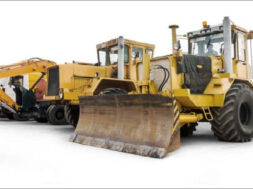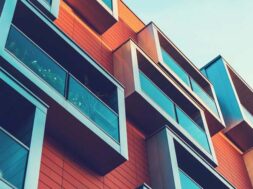It is a proven fact that the appealing environment of an office inspires its workforce and enhances their efficiency. Today’s office spaces not only offer a workers‑friendly environment but are also designed to be energy efficient and eco‑friendly; credit goes to the contemporary architecture. Architect Prem Nath speaks about the important ingredients of modern office buildings
Modern office architecture
Today, India’s architectural and urban landscape is being renovated in exuberant ways. Architecture in India has changed in manifold over a period of time. The influence of western-form of architecture is now vivid in the modern Indian buildings.
Architecture, prior the arrival of British on the Indian soil was a creation of spectacular sculptural forms in stone – which is traditional Indian architecture. On arrival of the British the scenario has changed. It was through them that the first introduction to elementary modern building construction and planning was introduced in India. Yet again, Independence woke us to a changed situation. Skyline today is the boost of modern architecture – commercial and residential.
Modern architecture is contemporary in appearance, technology, functions and facilities.
Transforming appearance
India’s future wave of slick contemporary architecture is visible in the new modern corporate/office buildings. Architects are combining traditional methods and sustainability with modern techniques and principles. Designs are climate–responsive, green and therefore sustainable. Today, office spaces are planned and designed with minimum space wastage. The concept of an office complex is changing, due to the increasing numbers of hours spent at the work place, companies/owners are providing staff with basic facilities like refreshing landscapes, utility shopping, food-courts, break areas, etc. The nature and size of office spaces have undergone a welcoming change. New technology is enabling Architects to experiments with forms and materials. Structural glass with various tints, ACP cladding as well as stone tiles are adorning the elevations of buildings. Office interiors are being designed on theme revolving around the business of the firm. With the open and transparent office model, traditional layouts are being ruled out. Office interiors today are energetic, young and peppy. Modular furniture and workstations accentuate the corporate contemporary look.
Technology boost
Hi-tech offices today are bustling with technology. Socio-economic awareness and pragmatic considerations are leading architects to design green, energy-efficient and sustainable buildings. Buildings today are not just eco-friendly but also intelligent, in terms of consumption of energy. Intelligent building means different things to different people – universal cabling systems, advance building controls etc. Use of modern applications like motion sensors, waterless urinals, dual flush systems, low flow fixtures, LED/CFL lights, low energy consuming equipment/devices are some of the methods to keep a check and control on energy consumed. Indoor air quality is maintained with carbon dioxide and dampness monitors. Temperature control sensors always maintain optimum temperature of indoors. Integrated building management systems (IBMS) work towards a goal of achieving intelligent sustainable environment. Architects are incorporating devices for clean renewable energy. Solar panels on the building terraces as well as elevations, solar street lamps etc. generate enough energy to carry out daily requirements of lighting. Wind turbines are also becoming a popular option for clean energy. Rainwater harvesting techniques are being used to reduce the use of portable water. STP is installed for primary treatment of waste water. In some case, offices are resorting to terrace farming or sky-farming (vegetative roof) to fulfil the needs of office flora and even veggies…!
Ample building materials
Today there is a wide array of choice for modern construction materials. Keeping up with the fast pace of work, construction materials being innovated for the timely completion of fast-track projects. Use of fly ash bricks in place of traditional bricks is encouraged as fly ash has properties of sound insulation; they are lighter in weight with higher compressive strength and less thermal conductivity. Eco-friendly bagasse boards are used for partition walls. FSC certified wood is replacing traditional wood. Low e-glass and insulated glass used for windows and structural glazing improve thermal efficiency thereby significantly reducing air-conditioning loads. 3-5mm air-gaps between the double insulated glass also provide sound insulation. The latest coloured solar panels are being used as skins for building elevations. Products like self cleaning glass shall soon catch–up as it will reduce the glazing maintenance cost.
Added facilities
Modern Indian offices have planned facilities like meeting points, break bays, gyms, canteen, food courts, medic rooms, child care, landscaped gardens etc. Environmental conscience employers are providing staff with services like vanpools/bus services.
Cookie Consent
We use cookies to personalize your experience. By continuing to visit this website you agree to our Terms & Conditions, Privacy Policy and Cookie Policy.









